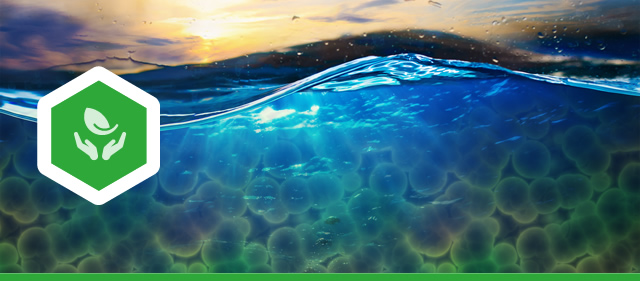
Talking to a group of sailors, John F. Kennedy said, "we all came from the sea. And it is an interesting biological fact that all of us have in our veins the exact same percentage of salt in our blood that exists in the ocean, and, therefore, we have salt in our blood, in our sweat, in our tears. We are tied to the ocean."
Unfortunately, for many of us inhabitants of this watery planet, the ocean is something we get to experience only on occasion. But now, thanks to climate change, the way we think about the sea has to change; as The New York Times stated on Sunday, October 26, "In the next four decades ... sea levels are expected to rise by as much as 30 inches." That's two and a half feet. That's a lot. Fortunately, the Weizmann Institute of Science is on the case, studying the stormy relationship between Earth's oceans and its climate.
The "captain" of much of the Institute's oceanic research, Dr. Assaf Vardi, studies marine algae, or phytoplankton: tiny, single-celled plants that are at the bottom of the marine food chain. Despite their small size, phytoplankton are (shockingly) responsible for nearly 50% of the world's total organic carbon.
Phytoplankton can have "blooms" so massive they can be seen from space, and yet can quickly collapse and disappear. In order to understand the blooms and how they affect the climate, scientists need to understand what kills them; in many cases, it’s a virus. Dr. Vardi and Institute colleagues Prof. Ilan Koren and Dr. Yoav Lehahn devised a way to study the blooms from space, reporting that "for the first time, we can quantify [the virus's] immense impact on open-ocean blooms: in just two weeks such viruses can 'consume' a huge algal bloom that harbours many tons of carbon. (Read "Visualizing Algae-Eating Viruses From Space.")
Dr. Vardi, Prof. Koren, and Dr. Lehahn – a marine microbiologist, a cloud physicist, and an oceanographer, respectively – also wanted to quantify how much carbon is "fixed" by the plankton. Carbon fixing is the conversion of carbon dioxide (CO2) to organic compounds, and it is important to maintaining life on earth. (Read "The Ocean’s Living Carbon Pumps.")
Dr. Vardi had field data from a research voyage (Read "The Deep Blue"), and by combining it with satellite data, the team was able, for the first time, to measure the effect of viruses on phytoplankton blooms. In fact, they estimated that a bloom of about 1,000 sq km (386 sq mi) – which forms in a week or two – can fix around 24,000 tons of organic carbon: as much as a similar area of rain forest! Further study, from space and from sea level, will shed more light on the carbon cycle and how it's impacted by environmental stresses.
Prof. Koren, the cloud physicist, also used the view from space to study aerosols and cloud formation. Clouds can't form without aerosols, which can be natural, like sea salt or dust, or human-made, like soot. But as we keep putting more aerosols into the atmosphere, what will happen to our clouds?
Using satellite and other data, Prof. Koren showed that more aerosols equals bigger clouds. He also found that there has already been a great deal of change: before the Industrial Age, there was less – and different – cloud cover over the ocean. His models indicate that our future likely holds even taller, larger clouds that rain more aggressively, contributing to flooding and sea level rise. (Read "Weizmann Institute Research Shows How Atmospheric Particles Affect Cloud Formation in Real Time.")
From the micro (one-celled plankton) to the macro (gathering data from space), Weizmann Institute scientists are analyzing the complicated relationship between ocean and climate – and us. Your support makes a difference. After all, as JFK said, we all came from the sea; we are tied to the ocean.
